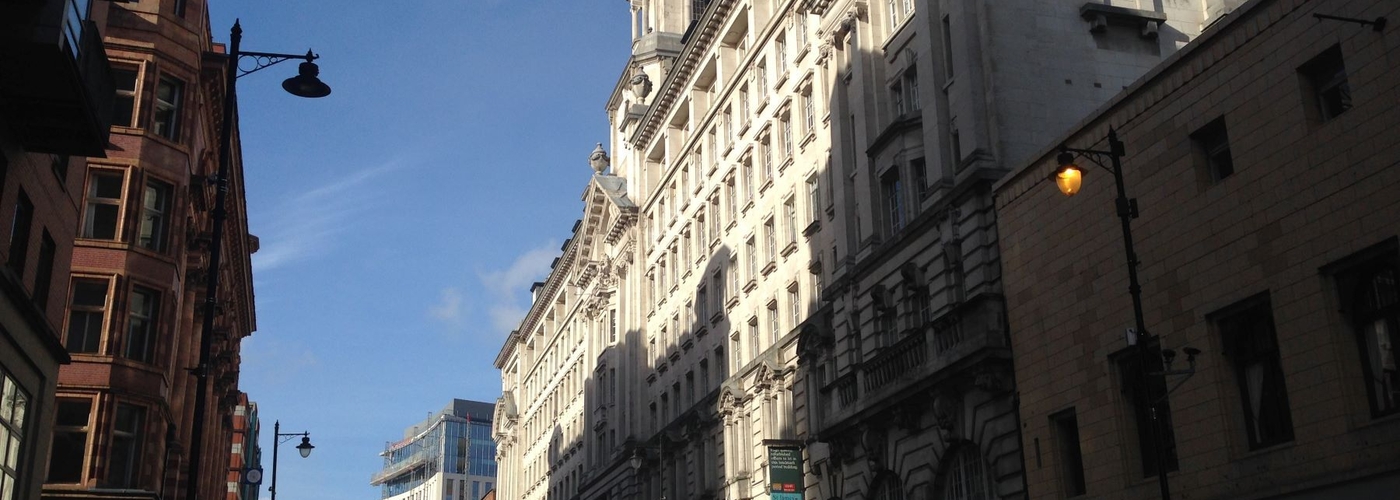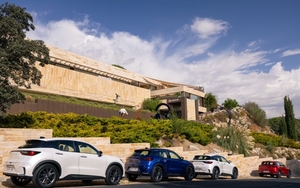Jonathan Schofield brings his architectural tour up to World War Two
MANCHESTER Ship Canal had opened in 1894 and with a general upturn in business a building boom hit Manchester. The steel framed building hit the city at the same time.
The buildings in the late 1890s until the outbreak of WW2 are some of the most bombastic in the city. This was the Imperial Age, the triumph of Pax Britannica, where the sun never set on the Empire and never set on Manchester’s cotton and manufacturing interests either. For a decade after WWI the great building programme continued.
This chapter looks at the commercial and civic buildings of Manchester in this period, we'll have a look at domestic and religious architecture at a later date.
Here we find a crazy, supercharged version of Renaissance meets Baroque architecture spread across huge facades
A particularly packing fine warehouse is Canada House by W & G Higginbottom from 1909 with its noble facade facing Great Bridgewater Street and Chepstow Street. The buff terracotta here blazes at certain times of the year as the sun sets. The art nouveau details such as the ironwork on the Chepstow Street entrance are superb, while the rear elevation with its iron and glass grid would have made any Bauhaus architect proud yet predates the Bauhaus school by ten years.
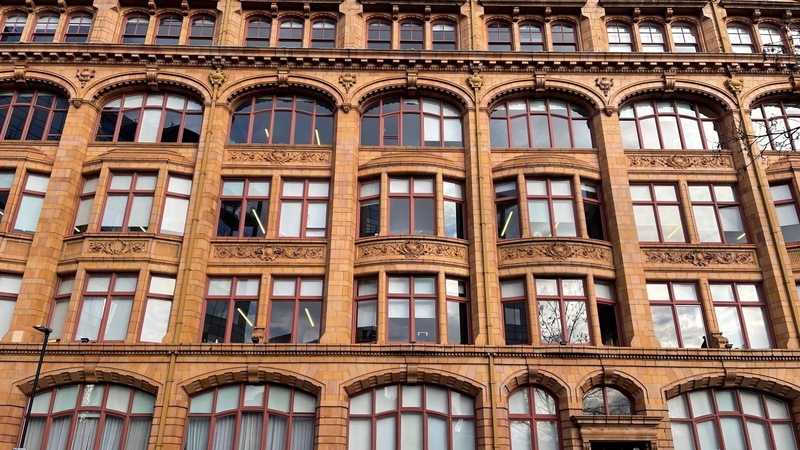
One of the men who seized the opportunity presented by the good times was Harry S Fairhurst, another dynasty maker. His early buildings such as Lancaster House and India House (both 1906) Whitworth Street and Bridgewater House (1912) are masterful examples of the new larger warehouses needed in the city. They also reflect the new fashion for a crazy, supercharged version of Renaissance meets Baroque architecture spread across huge facades.
After the First World War, Fairhurst shaped the city with more essays in gargantuan Classical structures such as Ship Canal House (1927) on King Street.
JH Sellar's Lee House (1931) is a rarity a truncated example at eight storeys of the International Modern meets Art Deco.
A prolific designer around this time was Charles Heathcote who mingled dainty detail with powerhouse punch. Notable buildings of his include Parrs Bank (1902) York Street, Lloyd’s Bank (1915), King Street and the earlier 107 Piccadilly textile warehouse (1899) and Onward Building (1904) Deansgate, for the Band of Hope charity. His exquisite Eagle Star Building (1911), Cross Street, stands out for its jewel-box character.
Clegg, Fryer and Penman’s St James’ Building (1913 and main image on this article), Oxford Road, another colossal Baroque warehouse, now converted into offices, stands out for its sheer scale alone.

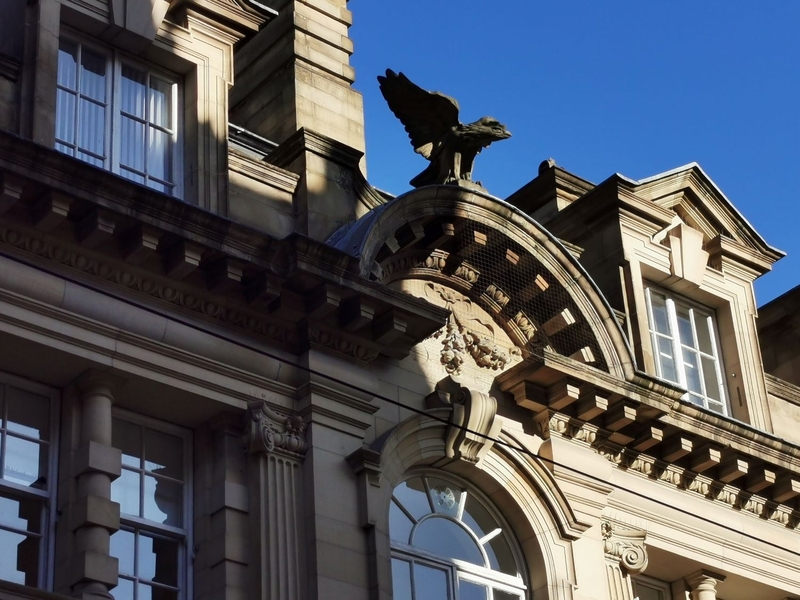
Many of the earlier buildings in this period, such as Lancaster House, Charles Trubshaw’s Midland Hotel (1903) and the Refuge Assurance Building by Alfred and Paul Waterhouse in various stages from 1891, are faced in terracotta and faience. This was a popular material at the time because large decorative patterns could be manufactured quickly and smoke and soot didn’t adhere to it so readily.
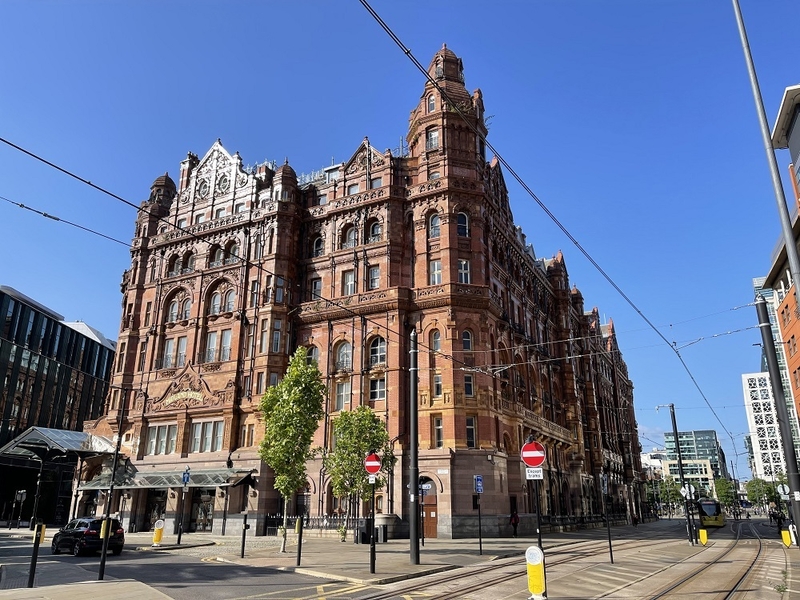
Perhaps the finest of these tiled wonders and one that points to the future: is the YMCA (1911) building (now St George's House) on Peter Street by Woodhouse, Corbett and Dean. Built of reinforced concrete this mingles Art Nouveau motifs with restrained ornamentation (as well as a copy of Donatello's St George) that whiffs of the changes taking place in architecture.

Working outside the city centre – perhaps they simply failed to get the commissions - was the practice of Edgar Wood and J.H. Sellars. This remarkable pair, first separately and then together, moved from Arts and Crafts, through a proto-Expressionism to the International Modern in their buildings. Edgar Wood's, First Church of Christ Scientist (1903), Daisy Bank Road in Victoria Park, is original and startling yet homely and familiar. For its age in Europe it scarcely gets better than Wood's masterpiece. Other buildings from Wood and Sellars survive, particularly in the suburbs of Hale and Middleton and over the hills in Huddersfield.
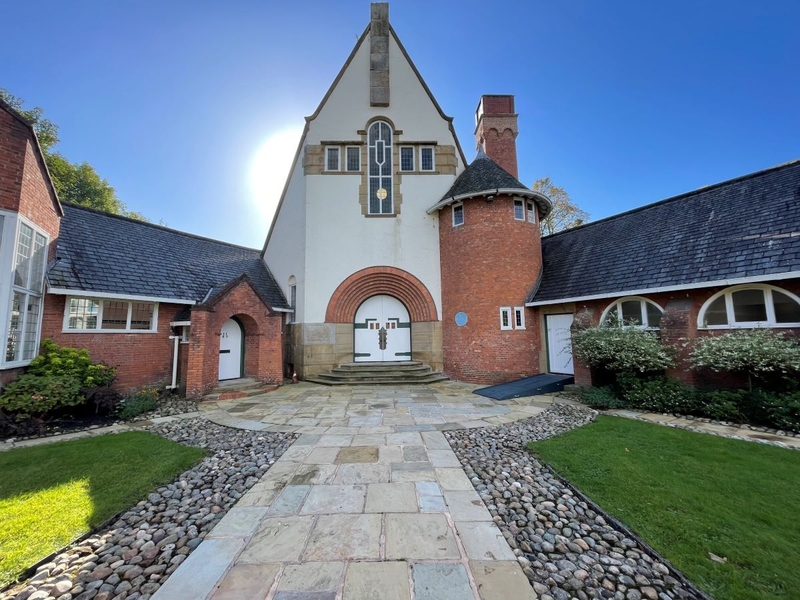
Similarly original is the eccentric but delightful Mediterranean inspired work of Richard Harding Watt, a Mancunian glove manufacturer turned amateur architect in Knutsford, south of the city. If Manchester has a Charles Rennie Mackintosh, it's Edgar Wood, if it has a Gaudi, it's Harding Watt.

The YMCA and Woods and Harding Watts work are in some way outliers. Before the International Modern movement swept many of the older styles aside after WWII the favoured commercial and civic style remained the brassily classical. Edwin Lutyens, the architect behind the government buildings in New Delhi, designed the monumental Midland Bank in the 1920s and the King Street building is in the top ten list of grand yet gracious Manchester buildings. The same goes for Vincent Harris' Central Library (1934); a true landmark that was an instant hit with citizens. The same architect designed the Town Hall Extension (1938) next door. This is an unusual but strong building with high gables and sheer facades, an epic council chamber and a lovely former Rates Hall.


In both the Midland Bank and the Town Hall Extension the change of the design tide can be seen with ornament free windows on blank walls. Historicism – looking back to older styles – is on the retreat.
The movements sweeping across architecture outside Britain are by the thirties clearly making themselves felt in Manchester. JW Beaumont’s Kendals Department Store (1939) on Deansgate and Owen Williams’ Daily Express Building (1939), now offices on Great Ancoats Street, provided examples of how the world was moving on. The dramatic black glass, 'streamline moderne' Daily Express building, might have been amongst the earliest of the major Manchester modernist buildings but it has never been bettered in the post-WWII years. First time visitors to the city frequently wonder if it was built within the last decade.

After bomb damage in World War II and the realisation that there was a new world situation, the city came up with the remarkable Manchester Plan of 1945. This envisaged massive changes including wholesale destruction and renewal across the city to meet with the new world situation. But Britain’s rapid decline from power and a recession in manufacturing meant that much was never realised. Instead the changes were piecemeal if often huge and these will be examined in our next history of Manchester architecture coming shortly.
If you liked this article read these:
Manchester Architecture part one
Manchester Architecture part twoManchester Architecture part two
Get the latest news to your inbox
Get the latest food & drink news and exclusive offers by email by signing up to our mailing list. This is one of the ways that Confidentials remains free to our readers and by signing up you help support our high quality, impartial and knowledgable writers. Thank you!






